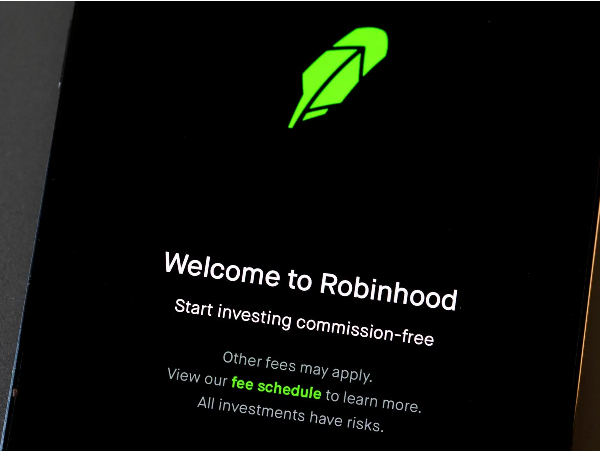Key Takeaways
Top Dividend-Paying Lumber & Timber Stocks
| Rank |
Stock |
Dividend Yield |
Annual Dividend |
Payout Ratio |
Description |
| 1 |
Acadian Timber Corp. (ADN.TO) |
6.66% |
C$1.16 |
72.71% |
Strong timberland management with stable cash flows, making it a high-yield dividend stock. |
| 2 |
Rayonier Inc. (RYN) |
4.61% |
$1.09 |
46.19% |
Diversified timberland portfolio with geographic advantages, ensuring consistent dividend payouts. |
| 3 |
PotlatchDeltic Corp. (PCH) |
4.63% |
$1.80 |
295.08% |
Strong earnings metrics and diversified revenue streams support reliable dividends. |
| 4 |
Weyerhaeuser Co. (WY) |
3.21% |
$0.84 |
168.00% |
Leading timber REIT with vast forest assets and a commitment to sustainability. |
| 5 |
West Fraser Timber Co. Ltd. (WFG) |
1.73% |
$1.28 |
-752.94% |
Exposure to housing and construction demand with disciplined capital allocation. |
| 6 |
Boise Cascade Company (BCC) |
0.87% |
$0.84 |
8.79% |
Strong presence in engineered wood products and construction markets, ensuring dividend stability. |
Lumber Stocks with Dividends: A Profitable Investment in Sustainable Forestry
Dividend-paying timber stocks deliver steady income and long-term value, making them a strong choice for investors. As housing demand drives lumber markets, these stocks offer reliable payouts while appreciating alongside timber assets. Sustainable forestry and inflation resistance add to their appeal, making them a smart play for income-focused portfolios.
Understanding Dividend-Paying Timber Stocks
Timber stocks fall into two main categories: timber REITs and traditional lumber companies. Timber REITs, such as Weyerhaeuser and Rayonier, own and manage vast forestlands, generating revenue through timber sales and land appreciation. Unlike traditional lumber companies, which focus on processing and selling wood products, timber REITs operate under a tax-efficient structure that requires them to distribute at least 90% of taxable income as dividends. This setup makes them attractive to income-focused investors seeking exposure to the forestry sector without direct operational involvement.
Several factors influence the timber market, including housing demand, infrastructure projects, and sustainability policies. The construction industry drives lumber consumption, with rising homebuilding activity boosting timber prices. Infrastructure investments, such as roads and bridges, also contribute to demand for wood-based materials. Additionally, sustainability initiatives, including carbon credit programs and responsible forestry practices, shape the long-term viability of timber investments. These elements create a dynamic market where investors must assess economic trends and environmental regulations.
Dividends play a crucial role in timber investments, providing shareholders with consistent income while reflecting a company’s financial health. Timber REITs, in particular, use dividends to signal stability and growth potential, often adjusting payouts based on timber harvest cycles and market conditions. Investors benefit from both cash flow and asset appreciation, as timberland values tend to rise over time. This combination of income and long-term capital gains makes dividend-paying timber stocks a compelling choice for those seeking portfolio diversification and inflation protection.
Benefits of Investing in Lumber Stocks with Dividends
Dividend-paying lumber stocks provide stability and income generation, even in volatile market cycles. Timber prices fluctuate based on housing demand and economic conditions, but companies with strong dividend policies help investors maintain steady cash flow. Timber REITs, such as Weyerhaeuser and Rayonier, distribute a significant portion of their earnings, ensuring consistent returns. This resilience makes lumber stocks an attractive option for those seeking reliable income amid economic uncertainty.
Timberland ownership offers long-term profitability while supporting sustainability initiatives. Unlike traditional manufacturing industries, timber companies benefit from biological growth, where trees naturally appreciate in value over time. Sustainable forestry practices, including responsible harvesting and carbon credit programs, enhance profitability while preserving environmental resources. Investors in timberland-backed stocks gain exposure to a renewable asset class with multiple revenue streams, including timber sales, land appreciation, and conservation incentives.
Lumber stocks also serve as a hedge against inflation and contribute to portfolio diversification. Timber prices tend to rise alongside inflation, as construction costs and housing demand increase. Additionally, timberland investments have historically shown low correlation with traditional equities, reducing overall portfolio risk. By incorporating dividend-paying lumber stocks, investors can balance income generation with inflation protection, ensuring long-term financial security.
Key Metrics for Evaluating Dividend Timber Stocks
Dividend yield and payout ratios are crucial indicators of a timber stock’s income potential. The dividend yield measures the annual dividend as a percentage of the stock price, helping investors assess return on investment. A high yield can signal strong income potential, but sustainability depends on the payout ratio, which reflects the portion of earnings distributed as dividends. Companies with a balanced payout ratio ensure long-term dividend stability without compromising growth.
Earnings growth, revenue stability, and debt management determine a timber company’s financial health. Consistent earnings growth supports dividend payments, while stable revenue streams—often tied to housing demand and infrastructure projects—reduce volatility. Debt management is equally important, as excessive leverage can strain cash flow and impact dividend reliability. Investors should analyze debt-to-equity ratios and interest coverage to gauge financial resilience.
Timber harvest volumes, pricing trends, and ESG considerations influence long-term profitability. Harvest volumes dictate revenue potential, while pricing trends reflect market demand and supply dynamics. Sustainable forestry practices and ESG commitments enhance investor confidence, as companies prioritizing responsible land management often secure premium pricing and regulatory advantages. Timber stocks with strong ESG policies benefit from long-term asset appreciation and reduced environmental risks.
Why Each Lumber Stock May be Great in Your Income Portfolio
Weyerhaeuser is a leading timber REIT with a strong dividend history, benefiting from its vast timberland holdings and sustainable forestry practices. The company’s commitment to ESG initiatives and carbon sequestration enhances long-term value, while its dividend framework ensures consistent payouts backed by stable cash flows.
Rayonier offers a compelling dividend yield of 4.61%, supported by its diversified timberland portfolio across the U.S. and New Zealand. Its focus on sustainable forestry and geographic advantages provides resilience against market fluctuations, making it a reliable income-generating investment.
PotlatchDeltic maintains a strong dividend policy with a quarterly payout of $0.45 per share. Its diversified revenue streams from timberlands, real estate, and wood products ensure financial stability, while strategic land acquisitions bolster long-term growth.
West Fraser Timber’s dividend yield of 1.73% is backed by its strong earnings and exposure to housing and construction demand Dividend History.. The company’s disciplined capital allocation and expansion into engineered wood products position it well for sustained dividend growth.
Boise Cascade’s dividend stability is supported by its leadership in engineered wood products and strong exposure to construction markets. Its diversified revenue streams and disciplined financial management make it a solid choice for dividend investors.
Acadian Timber Corp. (ADN.TO)
Acadian Timber boasts a high dividend yield of 6.66%, backed by its well-managed timberland assets, its focus on hardwood and softwood production ensures stable cash flows, making it an attractive option for income-focused investors.
Risks and Challenges of Investing in Timber Stocks
Market Volatility and Cyclical Nature of Timber Pricing
Timber prices are highly cyclical, influenced by housing demand, infrastructure projects, and global trade policies. Historically, prices have fluctuated significantly, with peaks driven by strong construction activity and downturns caused by economic slowdowns. Investors must navigate these cycles carefully, as timber stocks can experience sharp price swings based on supply chain disruptions and changing consumer demand.
Regulatory and Environmental Challenges Affecting Operations
Timber companies face stringent environmental regulations that impact harvesting practices and land management. Compliance with sustainability policies, carbon credit programs, and conservation efforts can affect profitability. Additionally, international trade restrictions and tariffs on lumber imports create uncertainty, requiring investors to monitor evolving regulatory landscapes.
Impact of Interest Rates and Housing Market Downturns
Interest rates play a crucial role in timber stock performance, as higher borrowing costs can slow homebuilding activity. A housing market downturn reduces demand for lumber, leading to lower revenues for timber companies. Investors should assess macroeconomic trends and Federal Reserve policies to anticipate potential shifts in timber demand.
How to Build a Dividend-Focused Lumber Stock Portfolio
Balancing Timber REITs vs. Traditional Lumber Companies
Timber REITs, such as Weyerhaeuser and Rayonier, provide stable dividend income through land ownership and timber harvesting. Traditional lumber companies, on the other hand, generate revenue from processing and selling wood products. A balanced portfolio should include both REITs for income stability and lumber producers for growth potential.
Role of ETFs in Diversifying Timber Industry Exposure
Investors can gain diversified exposure to the timber sector through ETFs like the iShares Global Timber & Forestry ETF (WOOD) and the Invesco MSCI Global Timber ETF (CUT). These funds hold a mix of timber REITs, forestry companies, and lumber producers, reducing individual stock risk while capturing industry-wide trends.
Long-Term Strategy for Reinvesting Dividends
Reinvesting dividends allows investors to compound returns over time. Many timber REITs offer dividend reinvestment plans (DRIPs), enabling shareholders to purchase additional shares automatically. This strategy enhances portfolio growth and maximizes income potential, particularly in tax-advantaged accounts.
Future Outlook for Dividend-Paying Lumber Stocks
Trends in Sustainable Forestry and Carbon Credit Markets
Sustainable forestry practices and carbon credit markets are reshaping the timber industry. Companies are increasingly monetizing carbon sequestration through forest conservation projects, creating new revenue streams. Investors should look for timber stocks with strong ESG commitments and participation in carbon offset programs.
Potential Shifts in Housing Demand and Global Timber Supply
Housing demand is expected to rise as interest rates stabilize, driving increased lumber consumption. However, global timber supply faces constraints due to environmental regulations and geopolitical trade tensions. Investors should monitor supply chain developments and regional timber production trends.
Advancements in Engineered Wood and Construction Technology
Innovations in engineered wood, such as cross-laminated timber (CLT), are expanding timber’s role in sustainable construction. These advancements improve durability, reduce carbon footprints, and enhance timber’s competitiveness against steel and concrete. Timber stocks positioned in this sector may benefit from long-term growth opportunities.
Final Thoughts
Dividend-paying timber stocks offer a compelling blend of stability, income, and long-term growth, making them valuable additions to an investment portfolio. Despite market volatility and regulatory challenges, their inflation-resistant nature and sustainable forestry practices enhance their appeal. Balancing timber REITs with traditional lumber companies, leveraging ETFs for diversification, and reinvesting dividends can maximize returns. As advancements in engineered wood and carbon credit markets evolve, timber stocks remain positioned for sustained profitability in the global economy.






























Top Dividend-Paying Lumber & Timber Stocks
Lumber Stocks with Dividends: A Profitable Investment in Sustainable Forestry
Dividend-paying timber stocks deliver steady income and long-term value, making them a strong choice for investors. As housing demand drives lumber markets, these stocks offer reliable payouts while appreciating alongside timber assets. Sustainable forestry and inflation resistance add to their appeal, making them a smart play for income-focused portfolios.
Understanding Dividend-Paying Timber Stocks
Timber stocks fall into two main categories: timber REITs and traditional lumber companies. Timber REITs, such as Weyerhaeuser and Rayonier, own and manage vast forestlands, generating revenue through timber sales and land appreciation. Unlike traditional lumber companies, which focus on processing and selling wood products, timber REITs operate under a tax-efficient structure that requires them to distribute at least 90% of taxable income as dividends. This setup makes them attractive to income-focused investors seeking exposure to the forestry sector without direct operational involvement.
Several factors influence the timber market, including housing demand, infrastructure projects, and sustainability policies. The construction industry drives lumber consumption, with rising homebuilding activity boosting timber prices. Infrastructure investments, such as roads and bridges, also contribute to demand for wood-based materials. Additionally, sustainability initiatives, including carbon credit programs and responsible forestry practices, shape the long-term viability of timber investments. These elements create a dynamic market where investors must assess economic trends and environmental regulations.
Dividends play a crucial role in timber investments, providing shareholders with consistent income while reflecting a company’s financial health. Timber REITs, in particular, use dividends to signal stability and growth potential, often adjusting payouts based on timber harvest cycles and market conditions. Investors benefit from both cash flow and asset appreciation, as timberland values tend to rise over time. This combination of income and long-term capital gains makes dividend-paying timber stocks a compelling choice for those seeking portfolio diversification and inflation protection.
Benefits of Investing in Lumber Stocks with Dividends
Dividend-paying lumber stocks provide stability and income generation, even in volatile market cycles. Timber prices fluctuate based on housing demand and economic conditions, but companies with strong dividend policies help investors maintain steady cash flow. Timber REITs, such as Weyerhaeuser and Rayonier, distribute a significant portion of their earnings, ensuring consistent returns. This resilience makes lumber stocks an attractive option for those seeking reliable income amid economic uncertainty.
Timberland ownership offers long-term profitability while supporting sustainability initiatives. Unlike traditional manufacturing industries, timber companies benefit from biological growth, where trees naturally appreciate in value over time. Sustainable forestry practices, including responsible harvesting and carbon credit programs, enhance profitability while preserving environmental resources. Investors in timberland-backed stocks gain exposure to a renewable asset class with multiple revenue streams, including timber sales, land appreciation, and conservation incentives.
Lumber stocks also serve as a hedge against inflation and contribute to portfolio diversification. Timber prices tend to rise alongside inflation, as construction costs and housing demand increase. Additionally, timberland investments have historically shown low correlation with traditional equities, reducing overall portfolio risk. By incorporating dividend-paying lumber stocks, investors can balance income generation with inflation protection, ensuring long-term financial security.
Key Metrics for Evaluating Dividend Timber Stocks
Dividend yield and payout ratios are crucial indicators of a timber stock’s income potential. The dividend yield measures the annual dividend as a percentage of the stock price, helping investors assess return on investment. A high yield can signal strong income potential, but sustainability depends on the payout ratio, which reflects the portion of earnings distributed as dividends. Companies with a balanced payout ratio ensure long-term dividend stability without compromising growth.
Earnings growth, revenue stability, and debt management determine a timber company’s financial health. Consistent earnings growth supports dividend payments, while stable revenue streams—often tied to housing demand and infrastructure projects—reduce volatility. Debt management is equally important, as excessive leverage can strain cash flow and impact dividend reliability. Investors should analyze debt-to-equity ratios and interest coverage to gauge financial resilience.
Timber harvest volumes, pricing trends, and ESG considerations influence long-term profitability. Harvest volumes dictate revenue potential, while pricing trends reflect market demand and supply dynamics. Sustainable forestry practices and ESG commitments enhance investor confidence, as companies prioritizing responsible land management often secure premium pricing and regulatory advantages. Timber stocks with strong ESG policies benefit from long-term asset appreciation and reduced environmental risks.
Why Each Lumber Stock May be Great in Your Income Portfolio
Weyerhaeuser Co. (WY)
Weyerhaeuser is a leading timber REIT with a strong dividend history, benefiting from its vast timberland holdings and sustainable forestry practices. The company’s commitment to ESG initiatives and carbon sequestration enhances long-term value, while its dividend framework ensures consistent payouts backed by stable cash flows.
Rayonier Inc. (RYN)
Rayonier offers a compelling dividend yield of 4.61%, supported by its diversified timberland portfolio across the U.S. and New Zealand. Its focus on sustainable forestry and geographic advantages provides resilience against market fluctuations, making it a reliable income-generating investment.
PotlatchDeltic Corp. (PCH)
PotlatchDeltic maintains a strong dividend policy with a quarterly payout of $0.45 per share. Its diversified revenue streams from timberlands, real estate, and wood products ensure financial stability, while strategic land acquisitions bolster long-term growth.
West Fraser Timber Co. Ltd. (WFG)
West Fraser Timber’s dividend yield of 1.73% is backed by its strong earnings and exposure to housing and construction demand Dividend History.. The company’s disciplined capital allocation and expansion into engineered wood products position it well for sustained dividend growth.
Boise Cascade Company (BCC)
Boise Cascade’s dividend stability is supported by its leadership in engineered wood products and strong exposure to construction markets. Its diversified revenue streams and disciplined financial management make it a solid choice for dividend investors.
Acadian Timber Corp. (ADN.TO)
Acadian Timber boasts a high dividend yield of 6.66%, backed by its well-managed timberland assets, its focus on hardwood and softwood production ensures stable cash flows, making it an attractive option for income-focused investors.
Risks and Challenges of Investing in Timber Stocks
Market Volatility and Cyclical Nature of Timber Pricing
Timber prices are highly cyclical, influenced by housing demand, infrastructure projects, and global trade policies. Historically, prices have fluctuated significantly, with peaks driven by strong construction activity and downturns caused by economic slowdowns. Investors must navigate these cycles carefully, as timber stocks can experience sharp price swings based on supply chain disruptions and changing consumer demand.
Regulatory and Environmental Challenges Affecting Operations
Timber companies face stringent environmental regulations that impact harvesting practices and land management. Compliance with sustainability policies, carbon credit programs, and conservation efforts can affect profitability. Additionally, international trade restrictions and tariffs on lumber imports create uncertainty, requiring investors to monitor evolving regulatory landscapes.
Impact of Interest Rates and Housing Market Downturns
Interest rates play a crucial role in timber stock performance, as higher borrowing costs can slow homebuilding activity. A housing market downturn reduces demand for lumber, leading to lower revenues for timber companies. Investors should assess macroeconomic trends and Federal Reserve policies to anticipate potential shifts in timber demand.
How to Build a Dividend-Focused Lumber Stock Portfolio
Balancing Timber REITs vs. Traditional Lumber Companies
Timber REITs, such as Weyerhaeuser and Rayonier, provide stable dividend income through land ownership and timber harvesting. Traditional lumber companies, on the other hand, generate revenue from processing and selling wood products. A balanced portfolio should include both REITs for income stability and lumber producers for growth potential.
Role of ETFs in Diversifying Timber Industry Exposure
Investors can gain diversified exposure to the timber sector through ETFs like the iShares Global Timber & Forestry ETF (WOOD) and the Invesco MSCI Global Timber ETF (CUT). These funds hold a mix of timber REITs, forestry companies, and lumber producers, reducing individual stock risk while capturing industry-wide trends.
Long-Term Strategy for Reinvesting Dividends
Reinvesting dividends allows investors to compound returns over time. Many timber REITs offer dividend reinvestment plans (DRIPs), enabling shareholders to purchase additional shares automatically. This strategy enhances portfolio growth and maximizes income potential, particularly in tax-advantaged accounts.
Future Outlook for Dividend-Paying Lumber Stocks
Trends in Sustainable Forestry and Carbon Credit Markets
Sustainable forestry practices and carbon credit markets are reshaping the timber industry. Companies are increasingly monetizing carbon sequestration through forest conservation projects, creating new revenue streams. Investors should look for timber stocks with strong ESG commitments and participation in carbon offset programs.
Potential Shifts in Housing Demand and Global Timber Supply
Housing demand is expected to rise as interest rates stabilize, driving increased lumber consumption. However, global timber supply faces constraints due to environmental regulations and geopolitical trade tensions. Investors should monitor supply chain developments and regional timber production trends.
Advancements in Engineered Wood and Construction Technology
Innovations in engineered wood, such as cross-laminated timber (CLT), are expanding timber’s role in sustainable construction. These advancements improve durability, reduce carbon footprints, and enhance timber’s competitiveness against steel and concrete. Timber stocks positioned in this sector may benefit from long-term growth opportunities.
Final Thoughts
Dividend-paying timber stocks offer a compelling blend of stability, income, and long-term growth, making them valuable additions to an investment portfolio. Despite market volatility and regulatory challenges, their inflation-resistant nature and sustainable forestry practices enhance their appeal. Balancing timber REITs with traditional lumber companies, leveraging ETFs for diversification, and reinvesting dividends can maximize returns. As advancements in engineered wood and carbon credit markets evolve, timber stocks remain positioned for sustained profitability in the global economy.